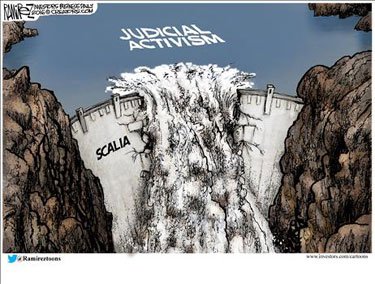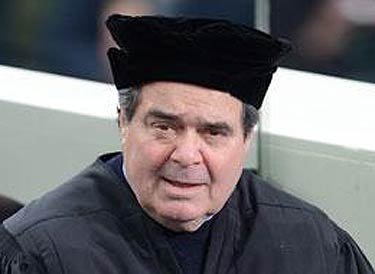As predicted, Justice Scalia wrote the majority opinion in District of Columbia v. Heller, which was naturally decided by Justice Anthony Kennedy in his capacity as decisive swing vote.
On first glance, I would say that the Court’s ruling primarily represents a strong rebuke to intellectually farcical sophistry and the kinds of whimsical and creative legal analysis which divorce themselves from the Constitution’s historical background, the expressed views and intentions of the framers, commentaries on the Constitution, and the entirety of history before 1932.
Justice Scalia writes at length, and with ill-concealed contempt, for efforts to eliminate the individual right to keep and bear arms by facile manipulation of the prefatory “well-regulated militia” clause, happily following the jurisprudential practice of recent decades of including a thorough and comprehensive survey of the relevant history.
And he concludes:
There seems to us no doubt, on the basis of both the text and history, that the Second Amendment conferred an individual right to keep and bear arms.
But, no sooner does Justice Scalia arrive at his bold conclusion than he begins retreating from its implications and striving actively to limit its practical consequences.
Like most rights, the right secured by the Second Amendment is not unlimited. From Blackstone through the 19th-century cases, commentators and courts routinely explained that the right was not a right to keep and carry any weapon whatsoever in any manner whatsoever and for whatever purpose. …
Although we do not undertake an exhaustive historical analysis today of the full scope of the Second Amendment, nothing in our opinion should be taken to cast doubt on longstanding prohibitions on the possession of firearms by felons and the mentally ill, or laws forbidding the carrying of firearms in sensitive places such as schools and government buildings, or laws imposing conditions and qualifications on the commercial sale of arms.
We also recognize another important limitation on the right to keep and carry arms. Miller said, as we have explained, that the sorts of weapons protected were those “in common use at the time.†307 U. S., at 179. We think that limitation is fairly supported by the historical tradition of prohibiting the carrying of “dangerous and unusual weapons.â€
It may be objected that if weapons that are most useful in military service—M-16 rifles and the like—may be banned, then the Second Amendment right is completely detached from the prefatory clause. But as we have said, the conception of the militia at the time of the Second Amendment’s ratification was the body of all citizens capable of military service, who would bring the sorts of lawful weapons that they possessed at home to militia duty. It may well be true today that a militia, to be as effective as militias in the 18th century, would require sophisticated arms that are highly unusual in society at large. Indeed, it may be true that no amount of smallarms could be useful against modern-day bombers and tanks. But the fact that modern developments have limited the degree of fit between the prefatory clause and the protected right cannot change our interpretation of the right.
In the end, the ruling merely affirms the existence of the individual right to keep and bears arms, and strikes down the District of Columbia’s ban on handgun possession in the home and its requirement that lawful firearms kept in a home be inoperable. It specifically declines to address licensing requirements (which Heller failed to challenge). Insofar as the Court affirms a right of self defense, it has done so only with respect to one’s home.
The moderation of Scalia’s opinion is likely to make its power as a decision stronger rather than weaker though, and District of Columbia v. Heller signals a major reversal in the direction of Constitutional Law at the Supreme Court level.








